When an AC source is connected to a capacitor there is a steady-state current in the circuit. Does it mean that the charges jump from one plate to the other to complete the circuit?
To answer the question of whether charges jump from one plate of a capacitor to the other when an AC source is connected to it, we can break down the explanation into several steps:
1. Understanding AC and Capacitors:
- An alternating current (AC) source provides a current that changes direction periodically. When connected to a capacitor, the AC source causes the voltage across the capacitor to vary with time.
2. Behavior of Charges in a Capacitor:
- In a capacitor, there are two plates separated by an insulating material (dielectric). When a voltage is applied, positive charges accumulate on one plate and negative charges on the other. This creates an electric field between the plates.
3. Current Flow in the Circuit:
- When the AC source is connected, the current flows in one direction during one half of the AC cycle (positive half-cycle) and in the opposite direction during the other half (negative half-cycle). This results in a continuous charging and discharging of the capacitor.
4. Charge Movement:
- The charges do not physically jump from one plate to the other. Instead, the current flowing through the circuit causes electrons to move towards one plate and away from the other. This movement creates a buildup of charge on the plates, which is what we observe as current.
5. Conclusion:
- Therefore, while there is a steady-state current in the circuit due to the alternating nature of the AC source, it does not mean that charges are jumping across the capacitor plates. The charges accumulate on the plates, and the current is a result of the movement of electrons in the circuit.
Final Answer:
No, charges do not jump from one plate to the other to complete the circuit. Instead, the current causes charges to accumulate on the plates, creating an electric field, while the actual movement of charges occurs in the circuit connected to the capacitor.
---
- An alternating current (AC) source provides a current that changes direction periodically. When connected to a capacitor, the AC source causes the voltage across the capacitor to vary with time.
- In a capacitor, there are two plates separated by an insulating material (dielectric). When a voltage is applied, positive charges accumulate on one plate and negative charges on the other. This creates an electric field between the plates.
- When the AC source is connected, the current flows in one direction during one half of the AC cycle (positive half-cycle) and in the opposite direction during the other half (negative half-cycle). This results in a continuous charging and discharging of the capacitor.
- The charges do not physically jump from one plate to the other. Instead, the current flowing through the circuit causes electrons to move towards one plate and away from the other. This movement creates a buildup of charge on the plates, which is what we observe as current.
- Therefore, while there is a steady-state current in the circuit due to the alternating nature of the AC source, it does not mean that charges are jumping across the capacitor plates. The charges accumulate on the plates, and the current is a result of the movement of electrons in the circuit.
No, charges do not jump from one plate to the other to complete the circuit. Instead, the current causes charges to accumulate on the plates, creating an electric field, while the actual movement of charges occurs in the circuit connected to the capacitor.
Topper's Solved these Questions
Similar Questions
Knowledge Check
A 30μF capacitor is connected to a 150 V, 60 Hz ac supply. The rms value of current in the circuit is
A17 AB1.7AC1.7mAD2.7AIn the circuit given, the charge on capacitor C3 at steady state is
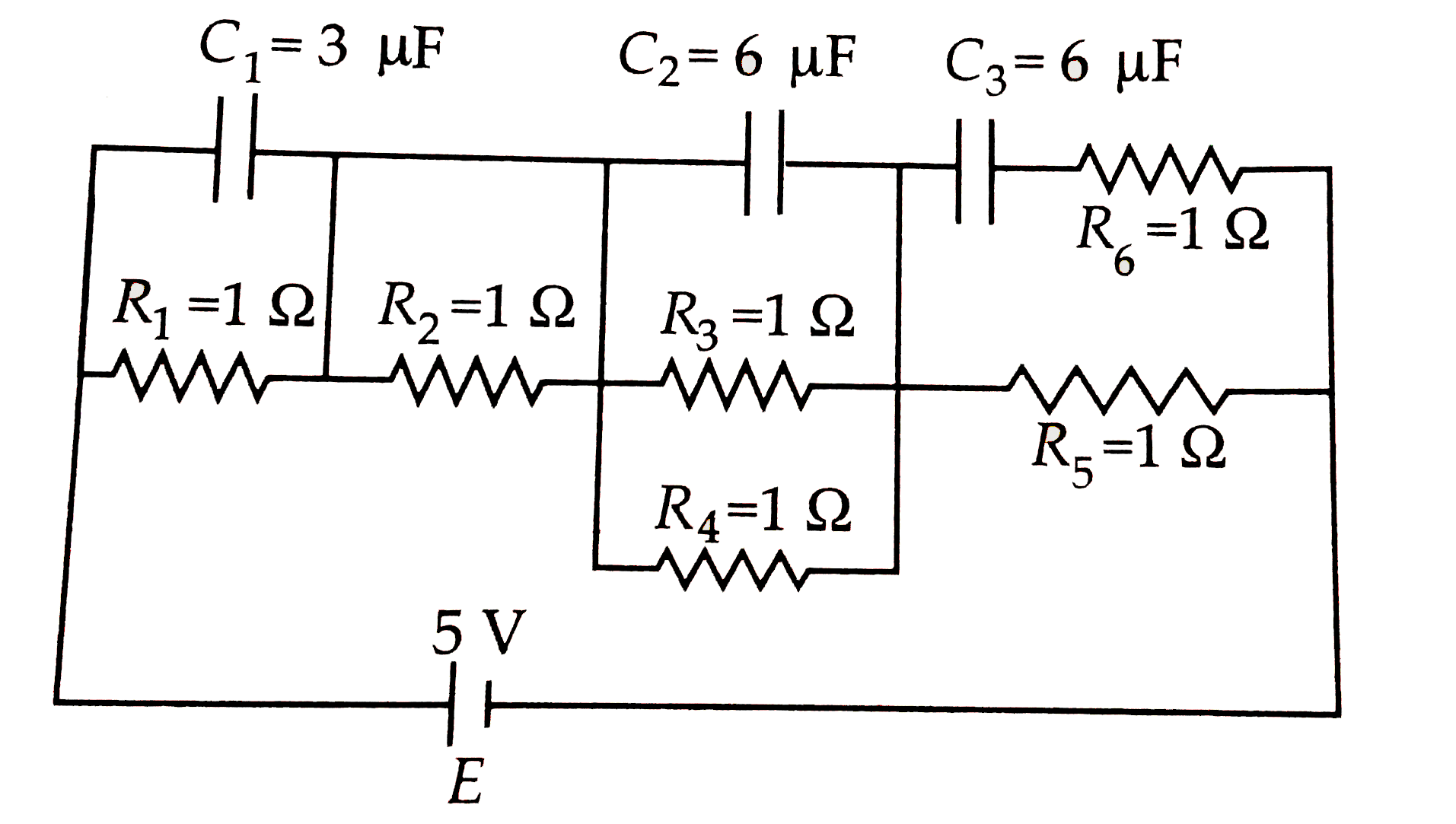 A6μCB12μCC18μCD24μC
A6μCB12μCC18μCD24μC
When the frequency of the AC source in an LCR circuit equals the resonant frequency, the reactance of the circuit is zero. Does it mean that there is no current through the inductor or the capacitor?
View SolutionThe circuit is in a steady state.
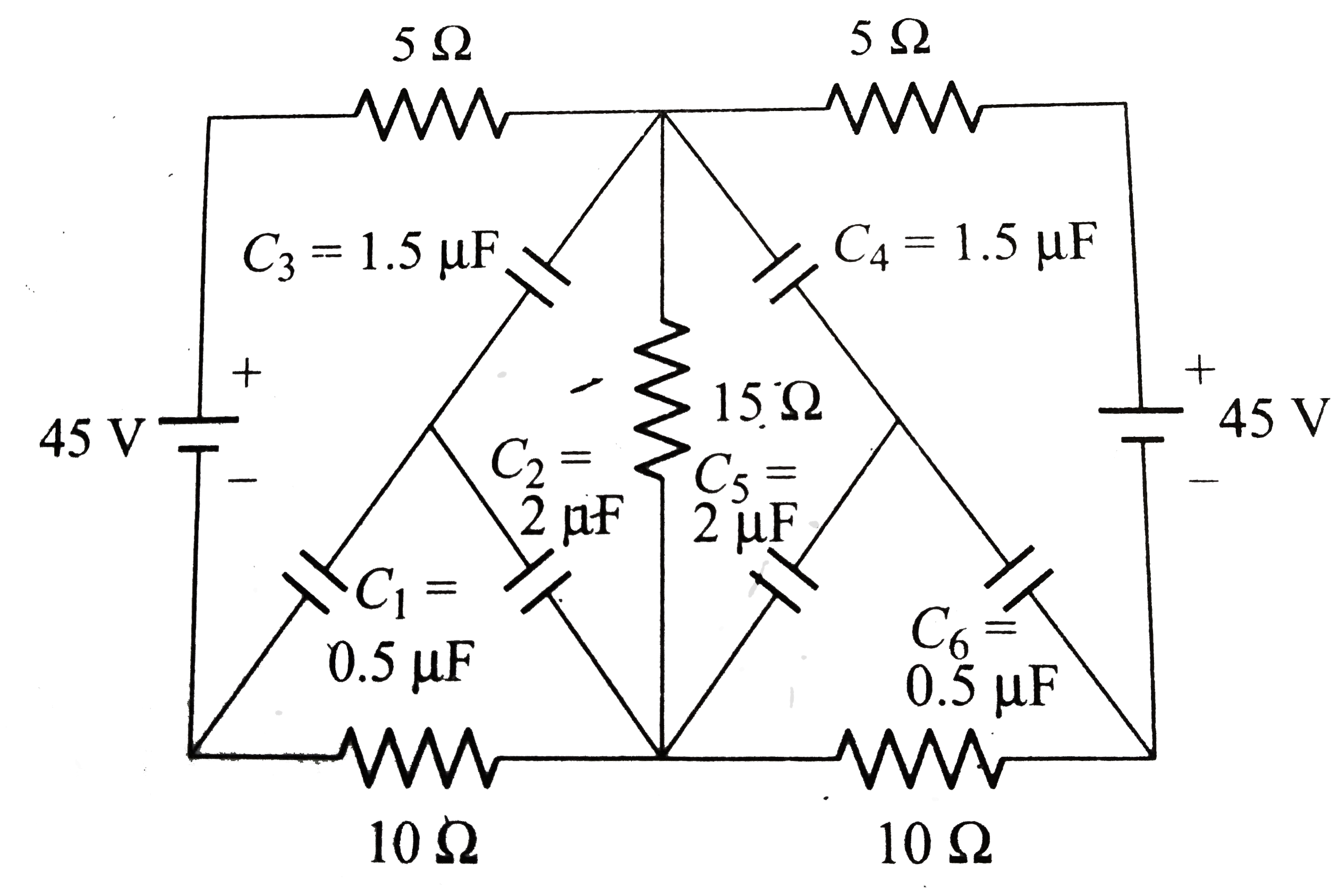
The charge in capacitor C3 is
View SolutionThe circuit is in a steady state.
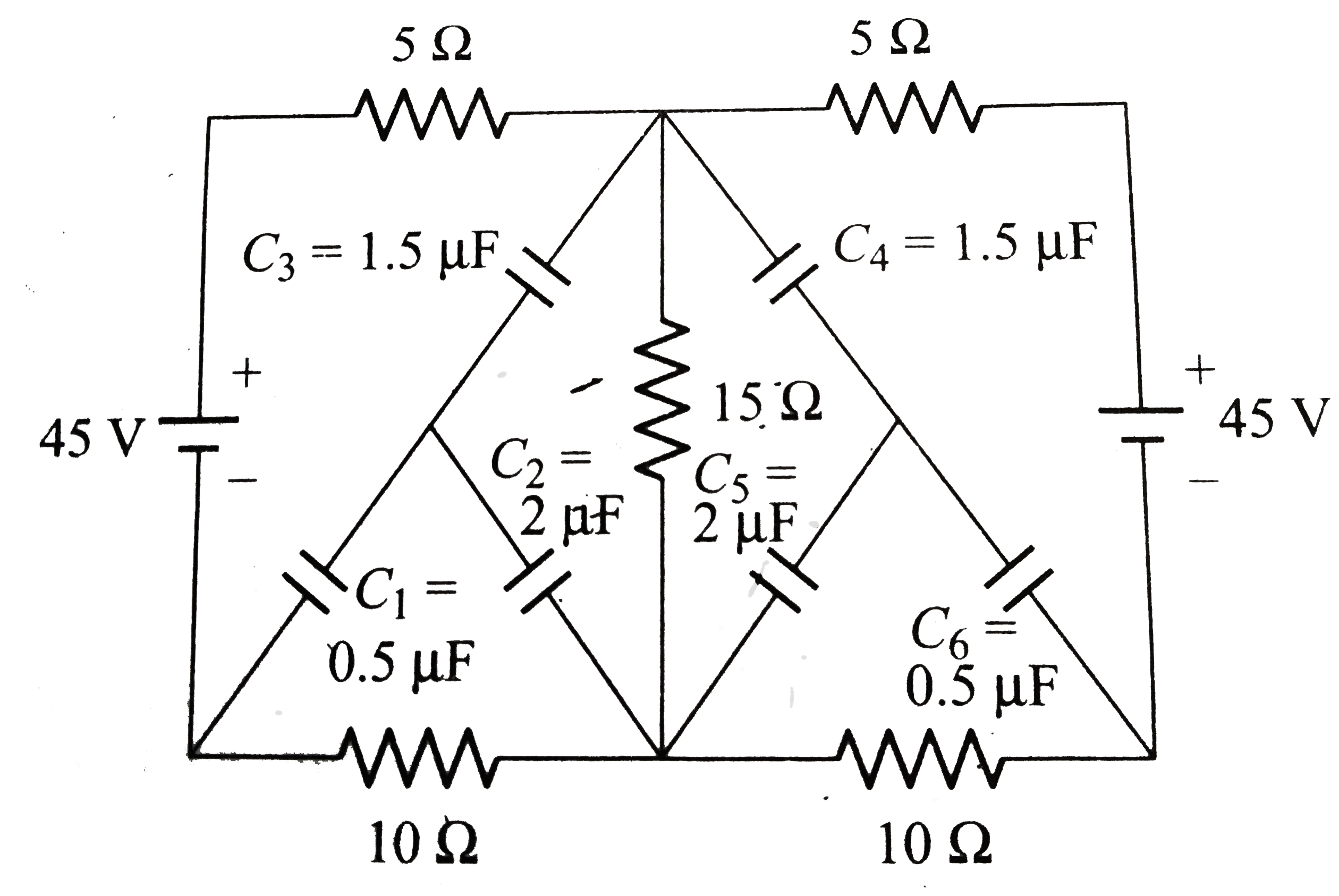
The charge in capacitor C1 is
View SolutionThe circuit is in a steady state.
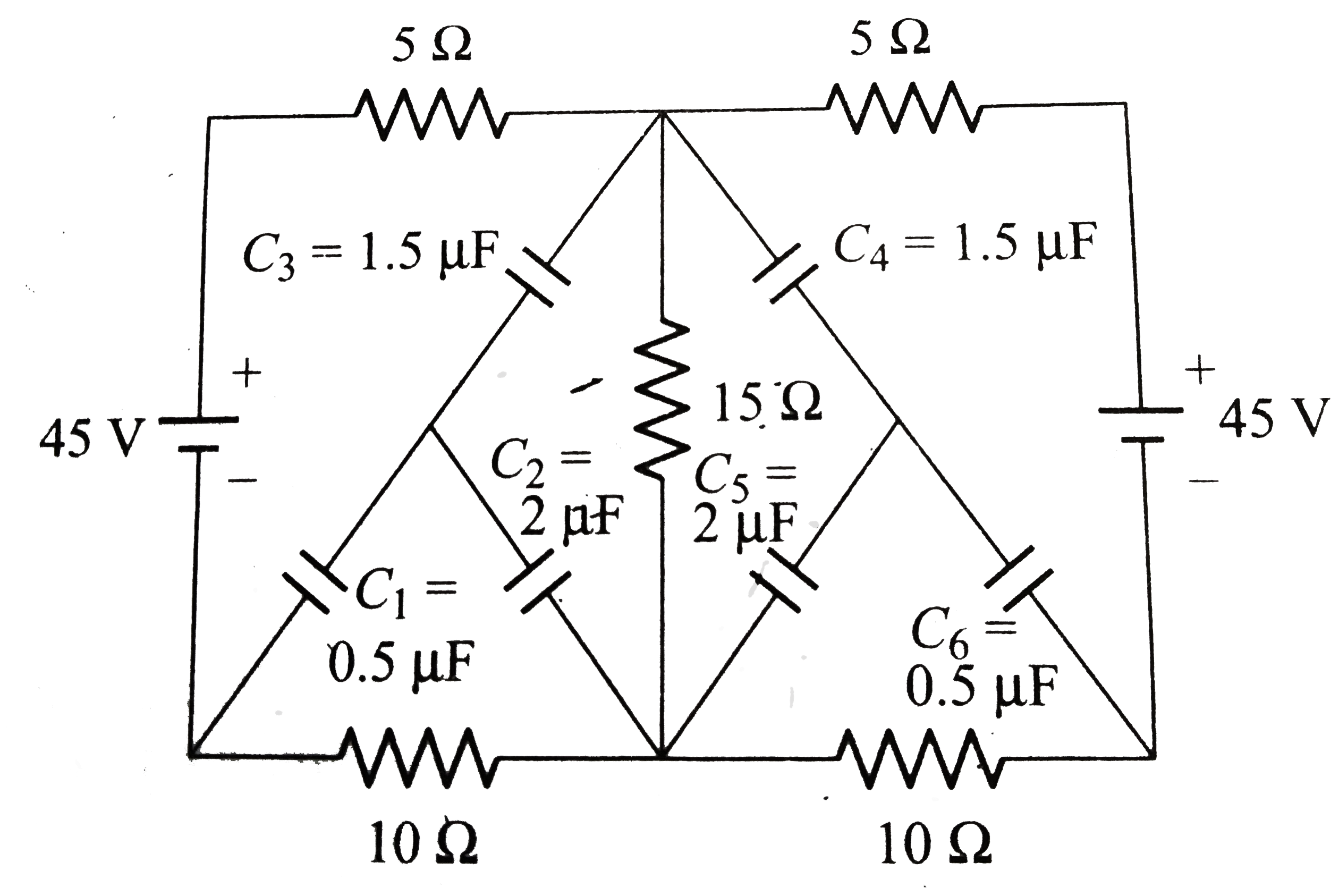
The charge in capacitor C2 is
View SolutionIn the circuit shown in figure, find the steady state charges on oth the capacitors.
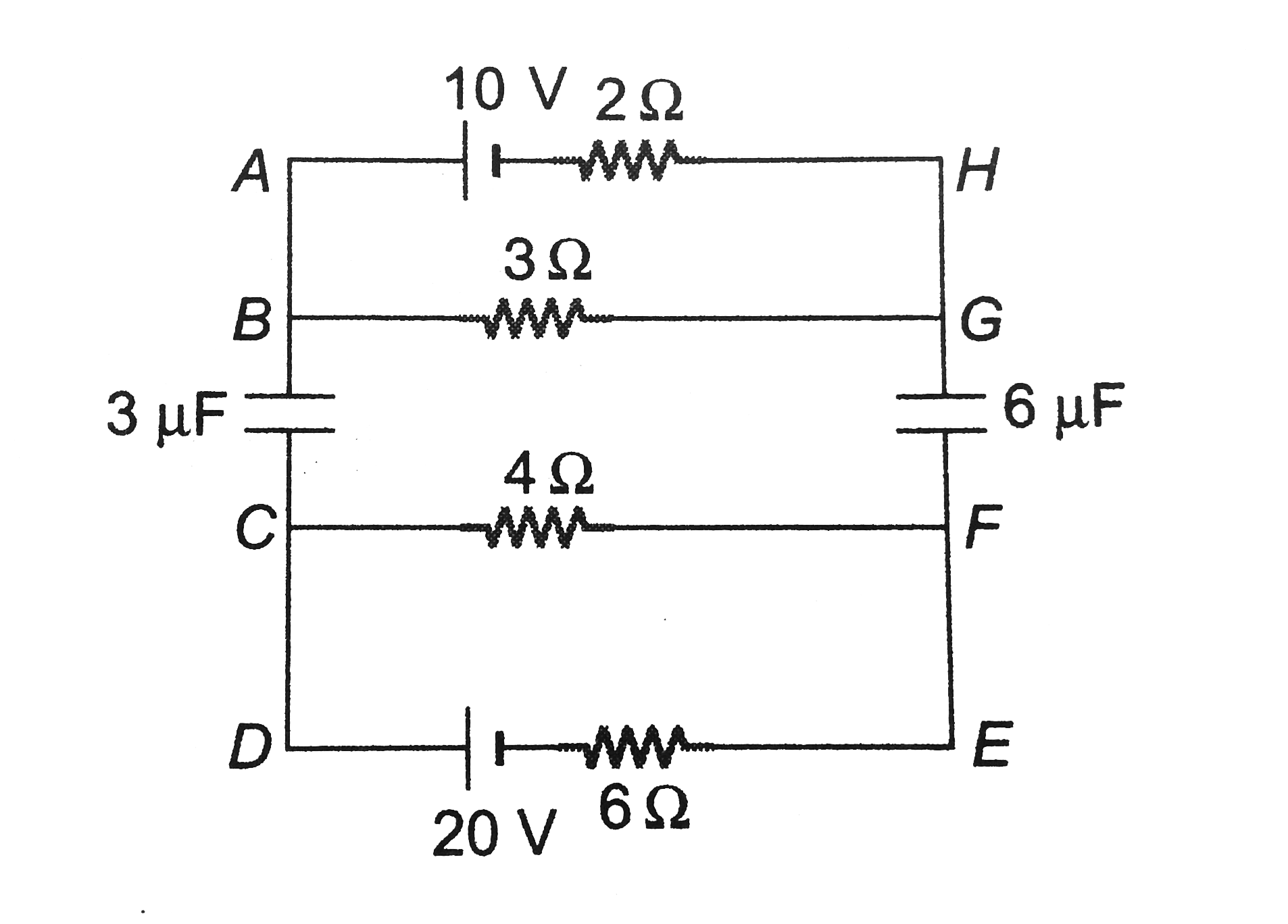
View SolutionA series RLC circuit is connected to an ac generator. The instant at which current in the circuit is zero, the energy stored in the capacitor and inductor are:
View Solution

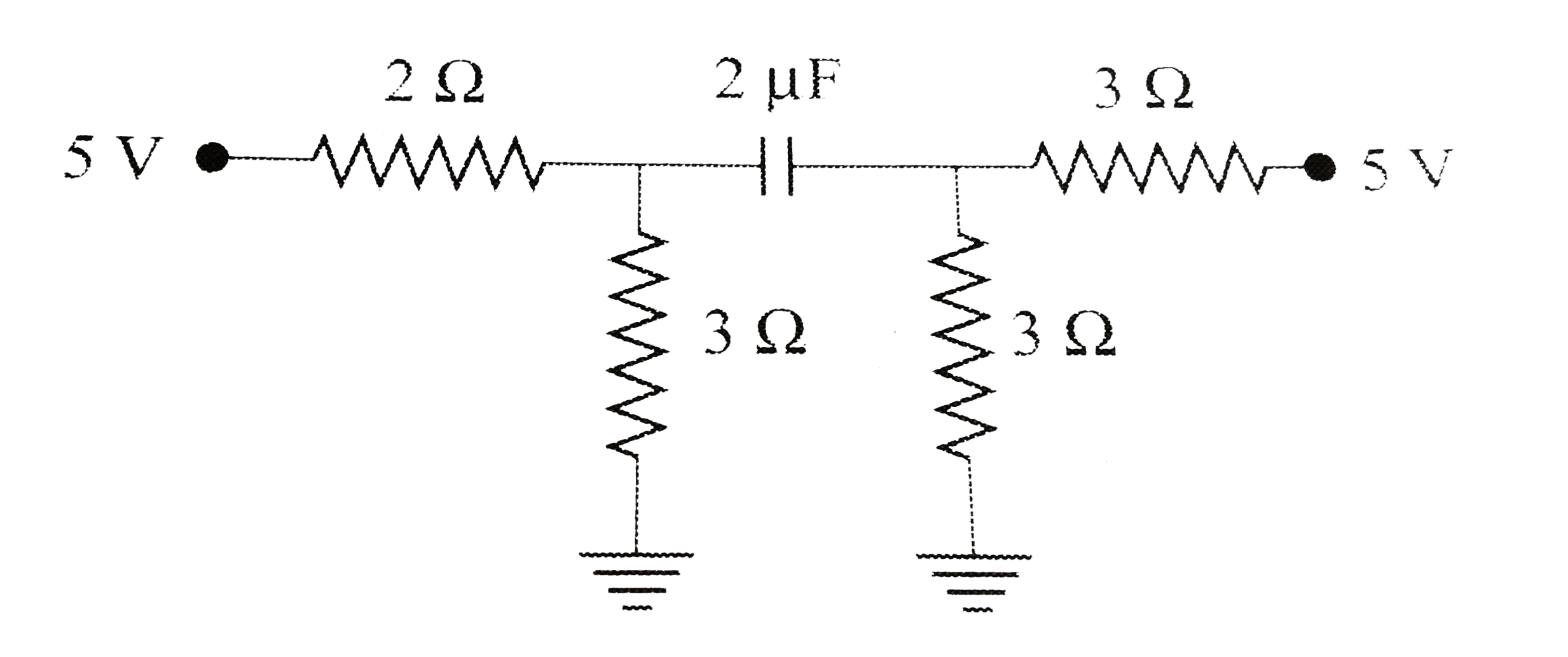
_PHY_E05_271_Q01.png)